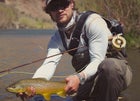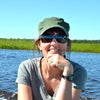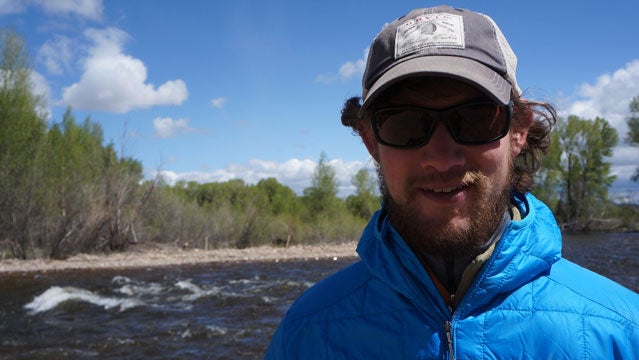Saratoga, Wyoming — Officially, Paul Moinester’s upstream journey started in the Florida Keys last February. But symbolically, it started somewhere on Capital Hill, in the midst of his two and half year term serving as a senior legislative assistant to Representative Steve Cohen (D – TN).

“I spearheaded the Keystone XL opposition campaign,” says 27-year-old Memphis native. This was in the aftermath of the 2010 mid-year elections. “An average of one anti-environment bill was passed in the House each day” during the 2011-12 session, he says.
Ready for a challenge outside the Beltway and having recently acquired a love of fly-fishing, Moinester decided to spend six months traveling around North America. Fishing. But not just fishing. His aim is to fly-fish his way from river to river, gathering and sharing their environmental backstories.
Moinester is telling those stories , as well as through posts on the and fly-fishing blogs. He and I crossed paths at a meeting, hosted by the fishing and river advocacy group Trout Unlimited, in Saratoga, Wyoming. In addition to Orvis and Patagonia, Trout Unlimited and a number of fish advocacy groups across the country are providing him with various types of support on his journey
His itinerary is driven not necessarily by the most scenic or productive fishing spots, but by water scarcity, changing temperatures, development, invasive species, hatchery programs and other threats to wild fish stocks.
Moinester says he’s been struck by the differences between fishing in the West and in the East. “Back around D.C., it’s about how much you can catch and how much you can keep. But out here in the West, fishing is a political act.”
That is not only because of the ongoing battles between advocates of wild salmon and proponents of hatchery programs, but it’s increasingly also about water rights – especially in the headwaters of the Colorado River.
“Denver and the Front Range has access to a tremendous amount of water from what were once pristine rivers. Today, 60 percent of the Frasier River’s flow gets pulled out for municipal purposes. They’re draining it so people can have nice Kentucky Bluegrass lawns,” Moinester says. The losers in the equation are the 90 percent of wildlife that rely on the rivershed, and the anglers and other recreational users of the waterways, who watch water levels fall throughout the summer.
“In an era of increasing water scarcity, you have these historic water rights that are very entrenched. So how do you go about conserving these resources? Today you’d never develop a system that works the way 100-year-old water rights work.”
The legacy of hydroelectric dams is another topic that Moinester has run into, and one that he says highlights unsound management policies in a time when the federal government is in serious fiscal trouble. Take the Snake River. “It contains about 70 percent of rehabilitation potential for the Columbia River’s wild salmon, but the Snake is no longer productive salmon habitat because of four dams. The Bonneville Power Administration has spent $10 billion to make salmon bypass [around the dams] easier, but it’s not been successful. To just dismantle all four of the dams, which produce only a small amount of power and are functionally obsolete, would only cost $1 billion.”
“A lot of conservation solutions regarding wild fish are cost-effective and make more economic sense than ongoing solutions,” he says. “But it still amazes me, the complexity of solving these issues. In D.C., I was seeing everything at 30,000 feet. I learned about these issues while sitting at a desk, wearing a suit. I can see and understand their magnitude a lot better by going out and seeing them for myself. At the local level there are so many moving pieces and laws that work against a given conservation issue.”
The next and final leg of Moinester’s journey will be a kind of home-coming, in that it will take him to the heart of the Keystone XL pipeline debate that he’s spent years fighting. Once he reaches the oil-sands fields of Northern Alberta, Canada, he plans to meet with policy makers and First Nations communities that are most directly affected by the growing oil-sands play – whether the bitumen the oil companies pull from the ground is piped into the United States, via Keystone XL, or to some distant Asian market, via the Gateway Pipeline. “I’ll be trying to understand how our global energy demands are impacting the upstream communities,” he says.
Between all those miles and meetings, he’ll keep seeking out interesting stretches of river, fly-rod in hand. It’s the fish after all, who must battle rising water temperatures and falling water levels, which beckoned him from his leather chair in the U.S. House of Representatives.
“Historically, fish conservation has been very localized: this damn, that culvert, these streams,” he says. “Climate Change is really the first threat to wild fish that is global. It presents a challenge for an angling community that is conservation-minded but not politically active. It makes them have to take a stand on contentious issues.”


